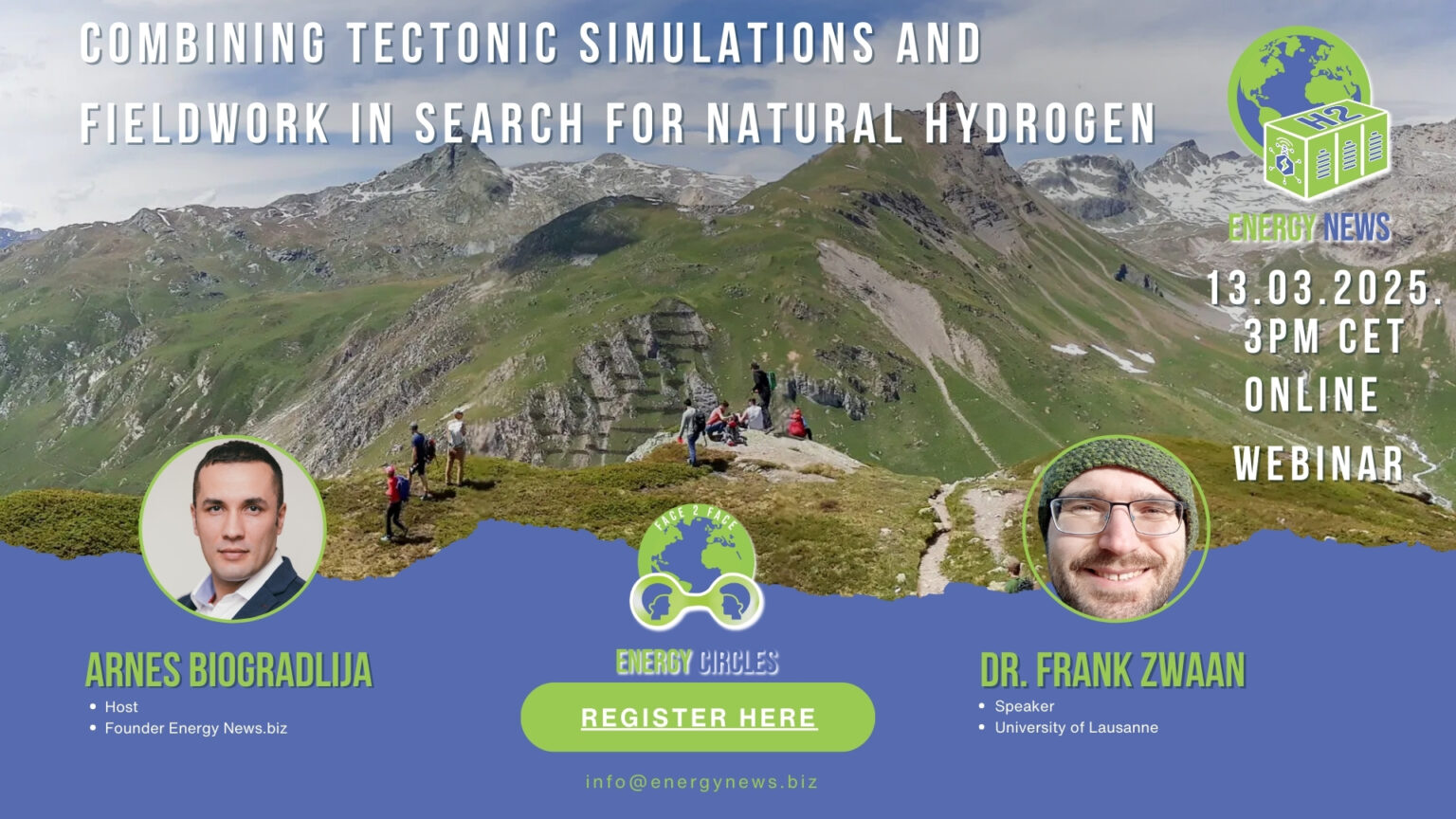Dr. Frank Zwaan, a geoscientist at the University of Lausanne, is using plate tectonic simulations to identify the best geological conditions for natural hydrogen generation and accumulation.
His research suggests that mountain ranges like the Alps, Pyrenees, and the Balkans could hold the key to unlocking vast reserves of this clean energy source.
WATCH THE WEBINAR
Serpentinization occurs when water reacts with iron-rich mantle rocks that have been exhumed to depths of 7–15 kilometers. This process generates hydrogen gas, which can migrate to the surface and accumulate in reservoirs. While serpentinization is well-documented in rift environments, Dr. Zwaan’s simulations reveal that mountain ranges may produce up to 20 times more hydrogen annually. This is because mountain-building processes, such as continental collisions, create ideal conditions for large-scale hydrogen generation and trapping.
Mountain ranges also offer the advantage of readily available reservoir and seal rocks, such as sandstones and clays, which are crucial for forming exploitable hydrogen accumulations. In contrast, rift environments often lack these geological features, making them less suitable for large-scale hydrogen extraction.
Mountain ranges like the Alps and Pyrenees are not only geological archives of ancient ocean basins but also potential hubs for natural hydrogen production. Dr. Zwaan’s research suggests that these regions could play a pivotal role in the global energy transition by providing a sustainable and renewable source of hydrogen.
However, realizing this potential will require significant investment in exploration and infrastructure. Major energy firms currently allocate less than 5% of their R&D budgets to hydrogen exploration, focusing instead on more established energy sources.
As the energy transition accelerates, geoscientists like Dr. Zwaan are playing a crucial role in shaping the future of energy. By combining tectonic simulations with fieldwork, they are uncovering the hidden potential of natural hydrogen and providing the data needed to guide exploration efforts.
Stay updated on the latest in energy! Follow us on LinkedIn, Facebook, and X for real-time news and insights. Don’t miss out on exclusive interviews and webinars—subscribe to our YouTube channel today! Join our community and be part of the conversation shaping the future of energy.





